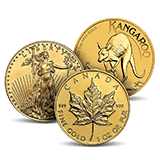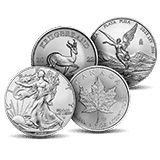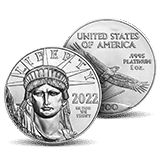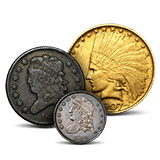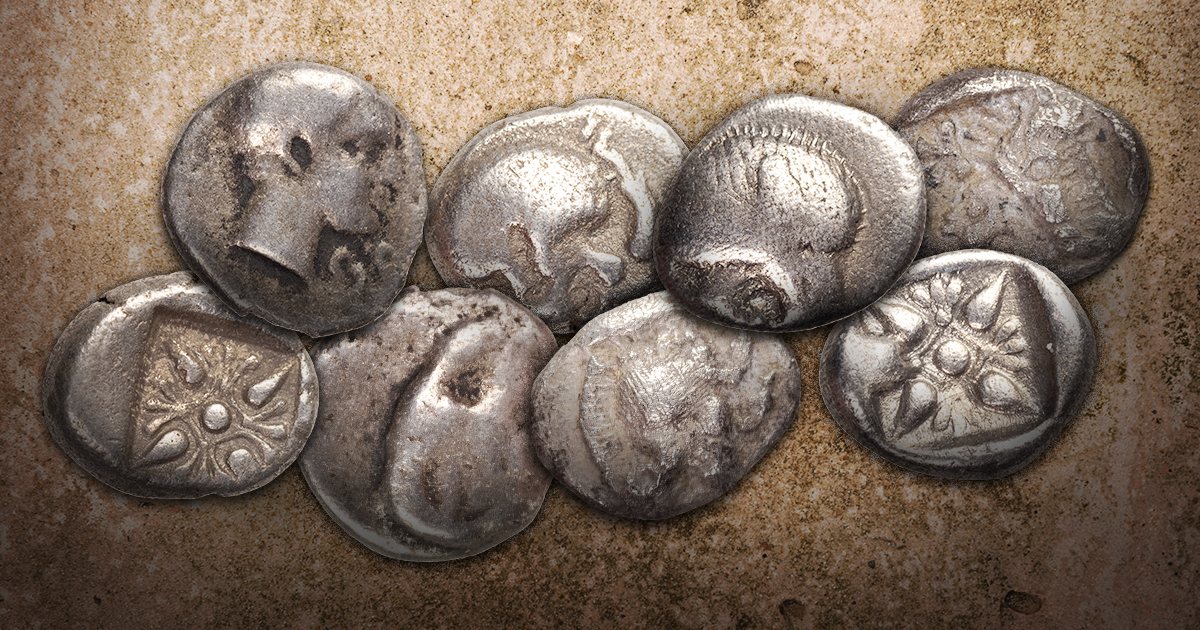
The Greek obol was also known as obolos and was a form of ancient Greek currency and a unit of weight. Although it was modest in size and value, the obol played a significant role in daily commerce, religious rituals, and the evolution of Greek coinage.
Origins and Etymology of the Greek Obol
The term “obol” comes from “obelos,” meaning a spit or nail, reflecting its earliest form as an iron rod.
According to Plutarch, six obols made a drachma (drachm), the number a hand could grasp. As iron rods, “utensil money” obols circulated and were employed during the Late Geometric period (Circa 900-700, BC), often traded in handfuls held at equal value to the drachm. Excavations at Argos have uncovered several dozen such rods, dated before 800 BC and now housed in the Numismatic Museum of Athens. Notably, Spartans retained the impractical iron form to discourage wealth accumulation, using an iron obol valued at four coppers.
Issuance and the Rise of Greek Coinage
Greek coinage was influenced by the neighboring Lydians, and accordingly, Early Greek coins were electrum-based and featured simple motifs. Over time, Greek city-states began minting their own silver coins with distinct civic symbols.
Obol composition transitioned from iron to silver by the Classical period and became widespread by the 5th century BCE. Obols were issued in multiple denominations such as diobols (two obols), triobols (three), trihemiobols (one and a half), hemiobols (half), and coins as small as one eighth obol. The obol’s widespread issuance supported local economies and reinforced the Greek civic identity.
Composition and Denomination
Standard obols were composed primarily of silver and weighed about 0.72 grams (one sixth drachma), but regional variations existed. For example, Corinth minted obols as light as 0.42 grams. In the 4th century BC, bronze obols appeared. These were larger to compensate for their lower value. Each obol was typically divisible into eight copper units (χαλκοί, khalkoí), although some city-states used twelve. Their practical value was considerable. An obol could buy a kantharos (like a chalice) and chous (about three liters) of wine or pay for modest services like a day’s labor.
Design Evolution
The designs of obols reflected artistic trends of the day and civic pride. Early silver issues bore basic geometric symbols or incuse squares. By the Classical period, Athenian obols famously depicted Athena and her owl. Corinthian issues featured Pegasus.
Meanwhile, variants such as the diobol and triobol depicted altered details like the owl’s orientation to indicate value. The Hellenistic period introduced more intricate depictions of local deities, heroes, and rulers on these coins.
Minting and Circulation
The Greek obol circulated widely throughout the Greek world. Regional mints varied slightly in their techniques, contributing to stylistic diversity. Intercity trade, military campaigns, and religious pilgrimages helped spread the currency and established its acceptance across the Mediterranean.
Regional Variations
• Athenian obols featured the Athena and owl motif. These coins are dominant in archaeological finds.
• Corinthian obols displayed Pegasus with a quadripartite incuse.
• Metapontion obols showed a gorgoneion with incuse square.
• Spartan obols retained the iron bar form. This reflected a cultural resistance to luxury.
• Lucanian obols included portraits such as Demetrius with an elephant headdress.
Historical and Cultural Significance
Obols served as currency for everyday purchases including wine, oil, and services. In funerary practice, one obol was placed in the mouth of the deceased as payment to Charon, the ferryman of Hades. This ensured passage across the river Acheron or Styx. Those without an obol were believed to wander the riverbanks for a hundred years.
The obol was a building block of economic exchange and civic symbolism. Its role in trade helped unify city-states economically. Its imagery promoted shared identity. Obols coexisted with larger denominations such as the drachma and tetradrachm. They also influenced neighboring systems including Persian and Roman coins. In literature and philosophy, the obol even appeared as a metaphor or symbol. Borges’ stories used it to represent spiritual debt and eternity.
The Greek obol embodies the transformation of currency from utilitarian objects to instruments of economic cohesion and cultural expression. From iron spits traded in handfuls to silver and bronze coins rich in civic symbolism, the obol reflects Greece’s inventive spirit and influence on global monetary history. Today, surviving obols are prized by collectors. Owing to their wide circulation and durability, most museum-held obols bear Athenian motifs. Authentic examples vary significantly in value based on condition, rarity, and origin.

